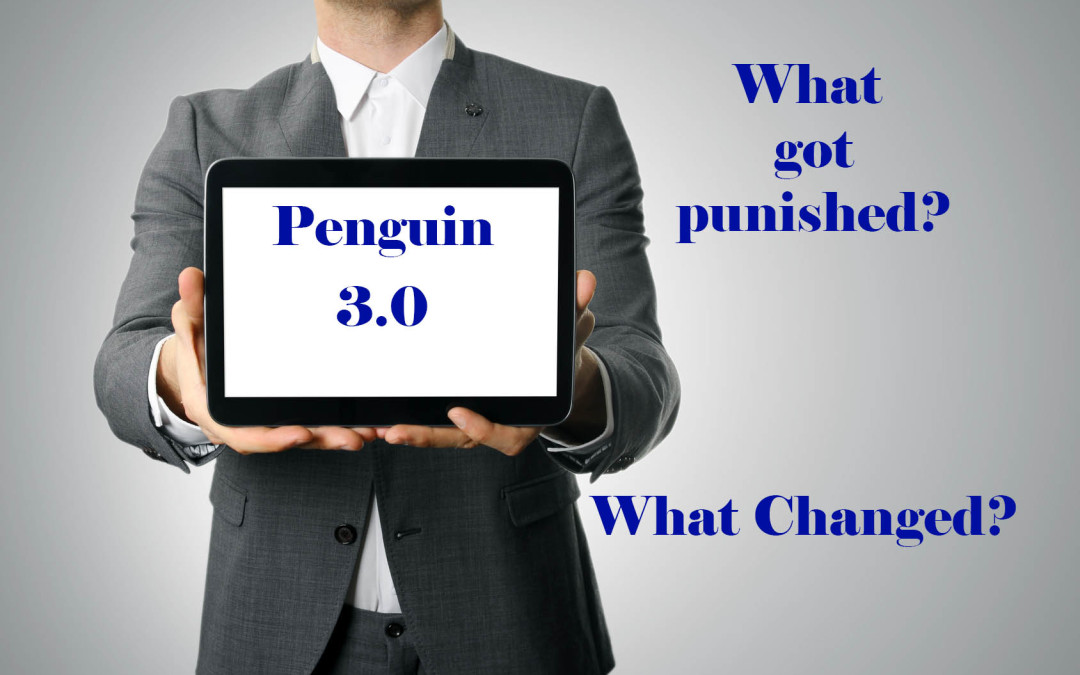If you don’t know, Penguin is a nickname given to recent updates of Google’s search engine algorithms.
These updates are designed to decrease search engine rankings for websites that artificially increase their rankings by manipulating links and other schemes that violate Google’s Webmaster Guidelines.
In October 2014, Google started rolling out Penguin 3.0 and it’s already caused quite a panic with everyone asking…
What happened in Penguin 3.0 do…what got punished…and how to do Penguin compliant SEO?
There’s already a ton of misinformation out there and false claims of “insider knowledge”.
To help our clients and friends in the industry, we are offering our expert analysis at Penguin 3.0 that is backed by real data from multiple sources that aren’t trying to sell you something based on fear or anxiety.
We’ve researched a ton of data, and think our conclusions are an accurate portrayal of what Penguin punished and what gets rewarded.
So without further ado and getting into tons of data…we’ll share a synopsis of our conclusions.
(Clients of the Optimacy Group can request access to our detailed and confidential data supporting these conclusions.)
What Got Impacted by Penguin 3.0?
1. Most sites who lost rankings due to Penguin had a high percentage of backlinks from spammy and poor quality articles, social bookmarks and blog comments.
Unsurprisingly, the sites least impacted by Penguin 3.0 had higher quality backlinks and citations.
2. On the surface, conclusion #1 wasn’t surprising and represented a continuation of previous Penguin updates.
However, further analysis of the data brought an important clarification – Bad links alone did not cause a decrease in rankings. Many sites with spammy backlinks were able to maintain their rankings IF they also had a high percentage of quality links.
Penguin 3.0 Summary
In short, Penguin 3.0 did not punish sites for BAD links…they just rewarded sites with higher quality links more than sheer volume.
Google has practically erased the value of a bad/poor quality link, which may seem like a negative to unscrupulous SEO “gurus”, but it is music to the ears of white-hat SEO practitioners.
In addition, this update helped close many negative SEO loopholes that existed. (Negative SEO refers to intentionally sabotaging a competitors search engine results by building low quality/spammy links to their site.)
Conclusion – Sites with a solid foundation of high quality links will see improvements in their search engine rankings, while sites built exclusively on spammy links will fail.


